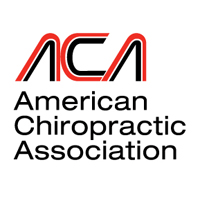Gastrointestinal & Digestive Disorders
- By susant3t
- •
- 24 Jun, 2015
- •
G.I. Disorders Problems with digestion can result within any of the organs involved with this complicated process. Most commonly, the stomach, gall bladder, and large intestine demonstrate the highest degree of incidence of gastrointestinal disturbance; however, the pancreas, liver, and the small intestine also play important roles in the digestive process and can also cause […]
Problems with digestion can result within any of the organs involved with this complicated process.
Most commonly, the stomach, gall bladder, and large intestine demonstrate the highest degree of incidence of gastrointestinal disturbance; however, the pancreas, liver, and the small intestine also play important roles in the digestive process and can also cause pain and discomfort when malfunctioning.
All of the organs in our body are connected to two different nervous systems. One is called the sympathetic and the other, the parasympathetic. The nerves of the sympathetic system run from the lower cervical spine (neck) to the upper lumbar spine (lower back.)
The parasympathetic nerves are found in the middle and upper regions of the cervical spine and the lower lumbar spine and sacrum (the bone between the pelvis).
Together, these two nervous systems help to control digestion by sending signals to the organs (efferent pathways) and returning signals from the organs (afferent pathways.) If an organ is in trouble, it may send excessive signals back through the afferent pathways, to the spine, and up to the brain.
This can cause a sensation of discomfort in either the area near the organ or in one of the pain referral areas associated with that organ. A well‑known organ that refers pain is gallbladder. People with a history of gallbladder trouble often complain of feeling a colic‑like (on‑again off‑again grabbing) pain between the shoulder‑blades.
The connection of a GI problem to your spine comes from the existence of these two nervous systems through a response known as the viscerosomatic reflex.
Chiropractors believe that the irritation at the level of the spine that corresponds to the involved organ can cause the muscles around the vertebra above and below the nerve to become hyperactive. This increased activity to the muscles is a result of the shared nerve supply between these muscles and the sympathetic supply to the organ.
If the muscle spasm exerts enough force to create a subluxation (a misalignment between the vertebrae) or creates enough congestion to the blood supply, more nerve interference is experienced. This inhibitory action results in a decreased ability of organ function.
Conversely, chiropractors also believe that problems with the organs of digestion may have started because of spinal subluxations.
An interesting study that took place at the Harvard Medical School demonstrated this theory.
Researchers at Harvard discovered that many people who suffered from Chron’s Disease (A severe bowel disorder) had marked (sever) subluxations of the second cervical vertebra.
Chiropractors believe that the Vagus nerve (the parasympathetic nerve supply to every digestive organ in the body) may be irritated when a severe second cervical subluxation is present.
Although the Vagus nerve is one of the twelve cranial nerves that come directly from the brain) the Vagus nerve passes closely enough to the structures between the first and second vertebra that subluxation at these levels may create enough irritation to the nerve to create problems with digestion.
Chiropractic can also help you if you suffer from a digestive disorder by reducing your level of stress.
Patient’s who receive chiropractic care will readily comment on this. Your digestive systems works best when the mind and body are in a relaxed state and manipulation, massage, acupressure, and moist heat therapies are just some of the many ways your chiropractor can help you obtain a healthier working digestive system.
Many chiropractors also include nutritional consoling as part of their practices.
Your chiropractor may recommend vitamin and mineral supplements, digestive aids, healing herbs, or simply recommend a proper diet with an emphasis on what foods to eat and what foods to avoid to improve your digestion.

There are various types of massage therapies, including sports massage, trigger point massage, deep tissue massage, and Swedish massage. Although these treatments can range in pressure, they all offer invaluable benefits for the body, mind, and spirit. Read on for the top six benefits of massage therapy.

Are you looking for a new, effective way to improve your physical health? Medical massage therapy is here to provide the natural health benefits you need. From optimizing circulation to relieving muscle tension and inflammation, medical massage is a powerful treatment for pain reduction and overall wellness.
























